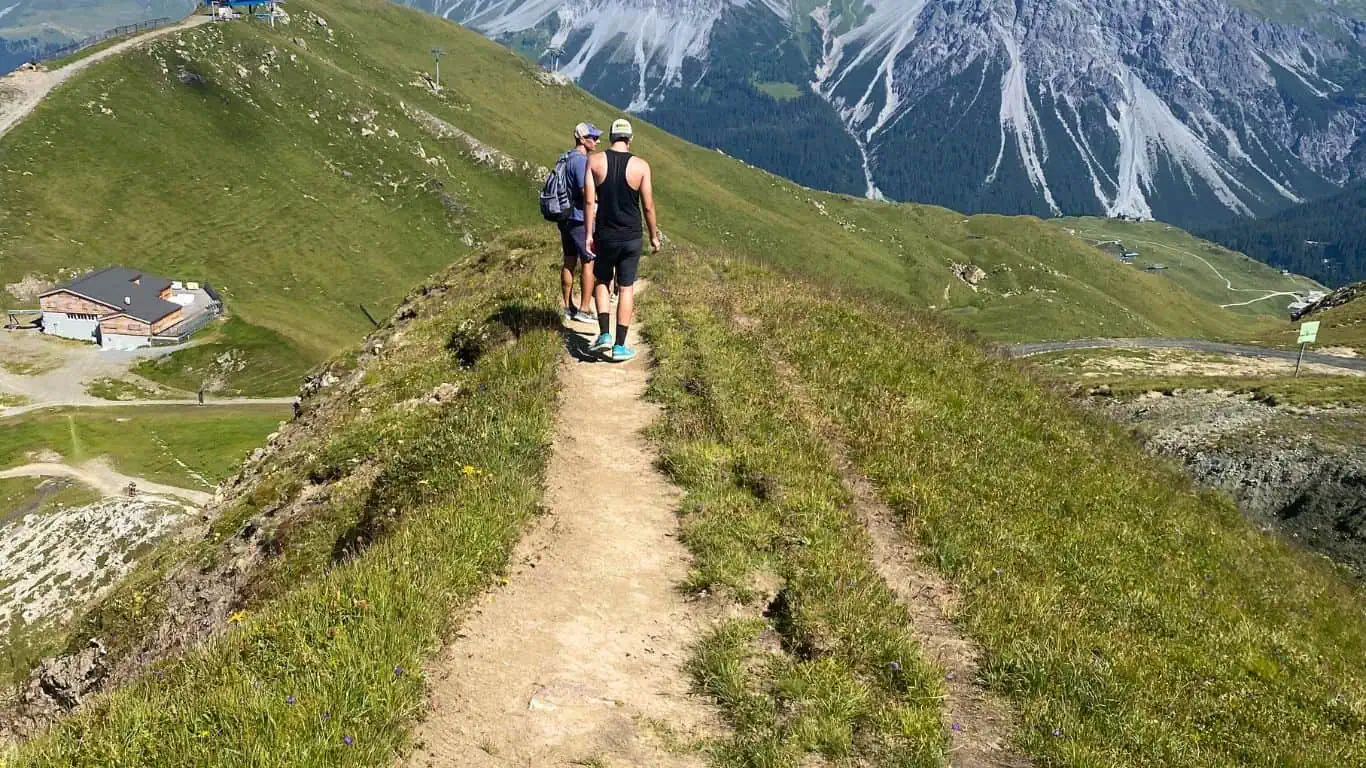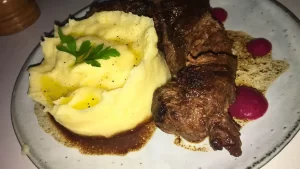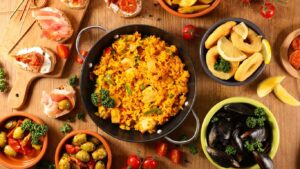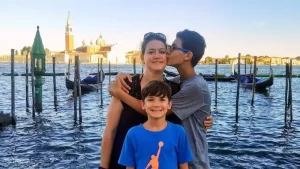10 Top Backpacking Routes in Europe with Gluten Free Options
Backpacking Europe: Unforgettable Adventures with Gluten-Free Options
Europe is a backpacker’s dream: charming villages, epic hiking trails, and cultures so diverse you’ll feel like you’ve traveled across multiple worlds. But for us gluten-free adventurers, there’s always that nagging question: “Will I find safe food?”
Good news—yes, you will! This guide covers some of the most iconic backpacking routes in Europe, with gluten-free dining tips to keep you fueled for the journey. So, grab your boots, pack your snacks, and let’s hit the trails!
1. Backpacking the Tour du Mont Blanc (France, Italy, Switzerland)
Imagine trekking through the Alps, crossing three countries on foot, and ending each day with views of snow-capped peaks and cozy alpine villages. The Tour du Mont Blanc is one of Europe’s most iconic backpacking routes, covering 170 kilometers of breathtaking scenery. It’s tough but totally worth it!
What’s special about this route is its flexibility. You can hike the whole thing in 10–12 days or break it into smaller chunks, depending on your schedule. I’ll never forget the moment I crested a ridge and spotted Mont Blanc glowing pink in the evening light—talk about a wow moment!
For the Gluten Free traveler:
Gluten-Free Tips for the Alps
Finding gluten-free food here is surprisingly easy, especially in tourist-friendly areas like Chamonix. Here are a few top picks:
- Bizes Restaurant: Perfect for local, farm-to-table cuisine.
- Joia Pizzeria: Gluten-free pizza that tastes like the real deal (just confirm cross-contamination with your server).
- La Tablée: A must-try for French classics with gluten-free options.
Don’t forget to pack some snacks for the trail—gluten-free crackers, nut bars, or even a stash of dried fruit will save you when hunger strikes mid-hike.
Chamonix:
Bizes Restaurant offers a delightful culinary experience with its diverse menu featuring locally sourced ingredients and exquisite French cuisine.
La Tablée – offers a delightful culinary experience, showcasing the rich flavors of French cuisine amidst the breathtaking backdrop of the Alps. There are many gluten free options available, please consult your server.
Bighorn Bistro offers a delightful culinary experience with its eclectic menu and charming alpine ambiance. GF dishes are marked on the menu.
Le Monchu offers an array of delectable dishes, with a special emphasis on gluten-free options to cater to diverse dietary preferences and ensure a delightful dining experience for all patrons.
Joia pizzeria if you are looking for GF Pizza. Double check for cross contamination.
Galerie Café des Aiguilles indulge in a variety of exquisite brunch dishes, with a special emphasis on delicious gluten-free options to cater to every dietary preference.
Les Houches:
Le Délice restaurant offers a delightful array of gluten-free dishes and marks allergens on their menu.
Kitsch Inn is renowned for its vibrant atmosphere and diverse menu, featuring an array of delectable gluten-free dishes to cater to every palate.
Courmayeur:
Ristorante Lo Sciatore is renowned for its exquisite cuisine, with delectable gluten-free dishes, ensuring a memorable dining experience for all guests.
La Padella offers a delectable array of gluten-free dishes, clearly marked on the menu for diners seeking delicious and safe dining options.
La Fouly:
Auberge-restaurant des Glaciers offers many gluten-free meals on their menu. Double-check each item as always with your waiter.
2. Backpacking in Cinque Terre (Italy)
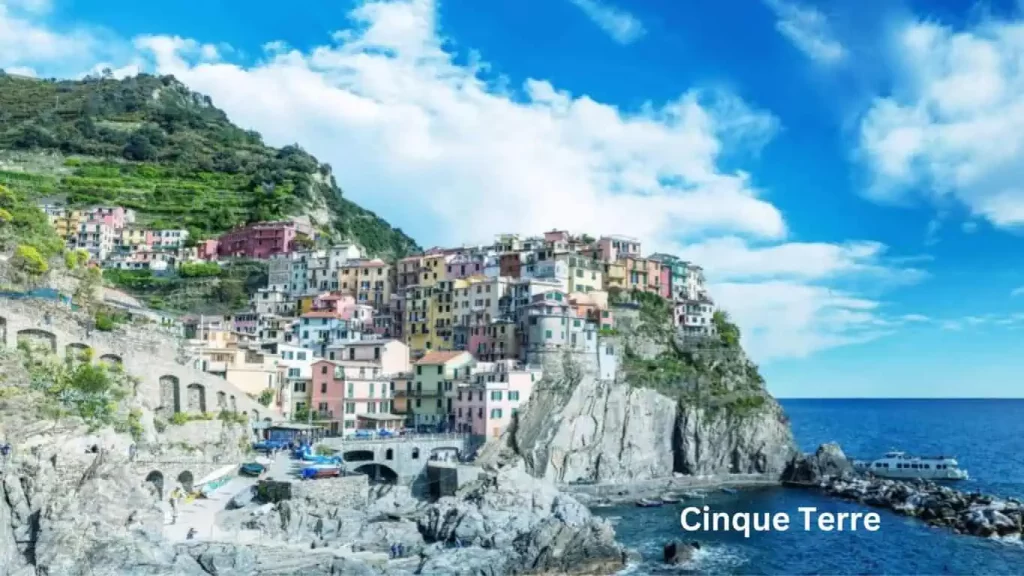
Cinque Terre, a UNESCO World Heritage Site along the rugged Italian Riviera, is undoubtedly one of the best places and a perfect destination for an unforgettable backpacking trip in Western Europe. This legendary stretch of coastline, comprising five picturesque villages – Monterosso al Mare, Vernazza, Corniglia, Manarola, and Riomaggiore – is a true hidden gem that should be on every traveler’s bucket list.
Cinque Terre‘s well-loved trails wind their way through dreamy terraced vineyards, fragrant olive groves, and lush Mediterranean greenery. Every turn seems to gift you a postcard-worthy view—rugged coastlines stretching endlessly, tiny villages clinging to cliffsides, and shimmering sea meeting sky. As you walk, you’ll stumble upon hidden treasures: a secluded cove here, a rocky outcrop perfect for a pause there, and even ancient watchtowers or medieval churches perched so dramatically it’s a wonder they’ve stood the test of time.
But let’s talk about the food—because, let’s be honest, it’s half the reason we travel. Cinque Terre’s cuisine is a celebration of all things fresh and flavorful. Think succulent seafood, crisp local wines, and the mouthwatering aroma of focaccia bread (gluten-free versions are thankfully easy to find) wafting from village bakeries. And don’t even get me started on the street food! Picture yourself munching on a cone of freshly fried calamari or a warm panini stuffed with Italian goodness—yes, even gluten-free options. It’s the kind of fuel that keeps you going, step after step, as you explore this enchanting stretch of coastline.
One of my favorite finds was Lunch Box in Vernazza. After hours of hiking the winding trails above Vernazza, I stumbled into a small café called Lunch Box. My gluten-free panini arrived, warm and fragrant, stuffed with bright green pesto and sun-dried tomatoes. One bite and I knew this was more than just a snack—it was the taste of Italy’s soul, crafted with care.
For the Gluten Free traveler:
Monterosso al Mare:
Pizzeria La Smorfia offers delicious GF Pizza and has great service and many reviews!
San Martino Gastronomia – the menu is changing daily but they usually have GF options available.
Vernazza:
Lunch Box – a popular panini and salad restaurant and of course they offer GF bread.
Ristorante Luca Vernazza – a typical Italian restaurant. They mark allergens on their menus.
Corniglia:
Il Buongustaio Cucina Casalinga – you’ll find several GF options like Risotto, sea food and fish.
La Posada Restaurant – a typical Italian Restaurant with many GF options, please info your server prior to ordering.
Gelateria Corniglia for GF crepes.
Manarola:
IL PORTICCIOLO ristorante pizzeria – A typical Italian Restaurant with many GF options available.
3. Backpacking Plitvice Lakes National Park (Croatia)
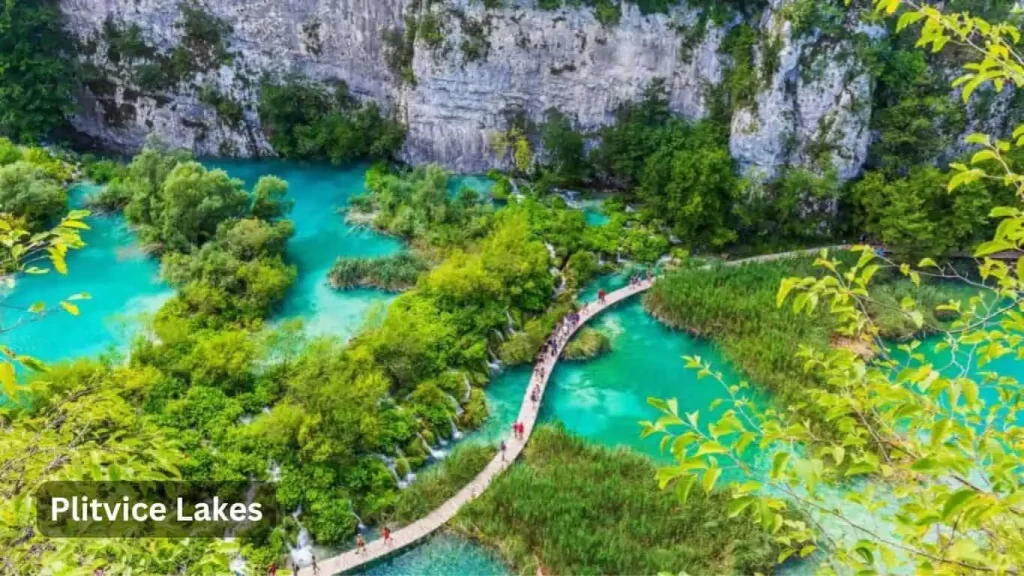
Plitvice Lakes is nature’s masterpiece: a series of 16 lakes connected by cascading waterfalls so vibrant they look Photoshopped. But let me tell you, the real magic is in the stillness.
One of the best ways to explore Plitvice Lakes is by embarking on the well-marked hiking trails that wind through the park. These trails offer a variety of difficulty levels, catering to both first-time backpackers and experienced hikers alike.
I’ll never forget hiking the Upper Lakes trail at Plitvice. I turned a corner and found myself on a wooden footbridge right above a cascading waterfall, the water crashing just feet below me. A rainbow had formed in the mist, arcing over the turquoise pools. I stood there for what felt like forever, captivated by the sheer beauty of it all. For a moment, the rest of the world disappeared, and it was just me, the sound of rushing water, and the gentle hum of nature all around.
When I visited, I arrived early in the morning. Mist hovered over the turquoise water, and I had the trails almost to myself. I’ll never forget stopping on a wooden boardwalk, listening to the sound of rushing water and birdsong, and feeling completely at peace.
For those seeking a more leisurely experience, Plitvice Lakes National Park offers guided tours and even electric boats that allow you to glide across the lakes and take in the stunning scenery from a different perspective. Regardless of how you choose to explore, be prepared to be awestruck by the natural beauty that surrounds you.
After a day exploring the breathtaking beauty of Plitvice Lakes, you’ll definitely need some good food to recharge—and lucky for you, Croatian cuisine does not disappoint. Just a short trip to the nearby villages or towns will lead you to charming local eateries and markets brimming with authentic flavors. Picture this: sizzling ćevapčići (those irresistible grilled minced meat sausages) served hot off the grill, or a hearty plate of sarma—cabbage rolls stuffed with flavorful meat and rice.
And if you’re gluten-free, you’re in for a treat with the fresh, naturally gluten-free breads and hearty stews Croatia is known for. Trust me, there’s nothing quite like a warm bowl of traditional soup to revive you after hours of hiking through this magical, waterfall-filled wonderland.
For the Gluten Free traveler:
Vila Velebita offers a delightful array of dishes, with a special emphasis on mouthwatering gluten-free options.
Poljana have many GF dishes (Salad, Meat and Fish) on their menu.
Plitvice Lakes Etno Garden has many domestic dishes on their menu that are made without any gluten ingredients.
4. Backpacking in the Julian Alps (Slovenia)
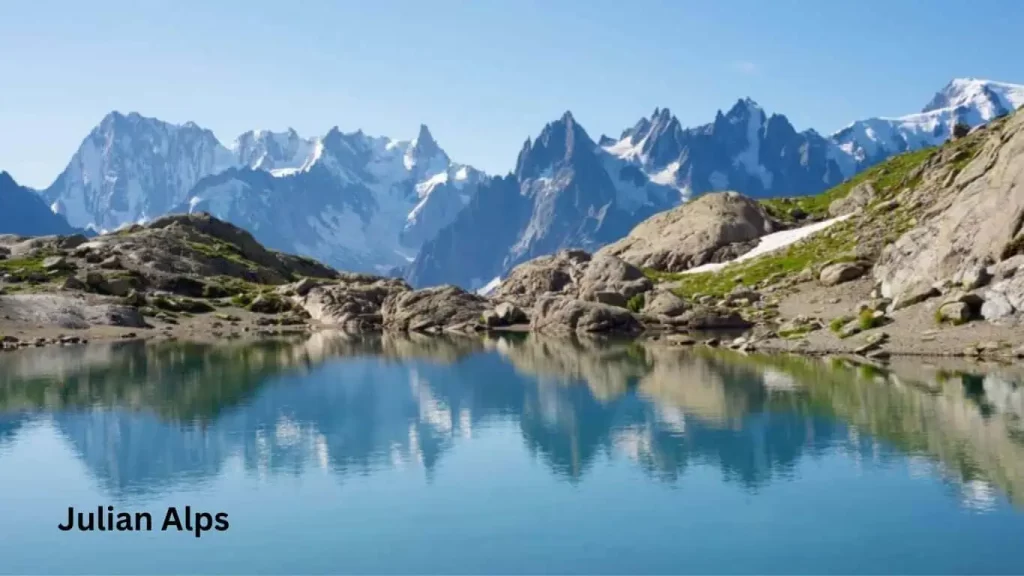
Tucked away in the heart of Slovenia, the Julian Alps offer an unparalleled backpacking experience that should be on every adventurer’s bucket list. This breathtaking mountain range, a true hidden gem in Eastern Europe, boasts rugged peaks, pristine alpine meadows, and charming villages that seem frozen in time.
For those seeking a unique and off-the-beaten-path adventure, the Julian Alps present a perfect opportunity to immerse yourself in nature’s raw beauty while exploring one of Europe’s lesser-known yet most captivating destinations. Whether you’re a first-time backpacker or a seasoned trekker, the Julian Alps offer a diverse array of multi-day hikes and village-to-village routes that cater to various skill levels and preferences.
One of my favorite moments in the Julian Alps was hiking to the emerald-green waters of Lake Jasna. The trail was quiet, and the air carried the scent of pine. As I approached the lake, I spotted a wooden pier jutting into the glassy surface, perfectly mirroring the surrounding peaks. Sitting on the edge with my feet dangling over the water, I pulled out a snack and just soaked it all in—no agenda, no hurry, just pure alpine bliss. The towering peaks of Triglav in the distance made me feel small in the best possible way.
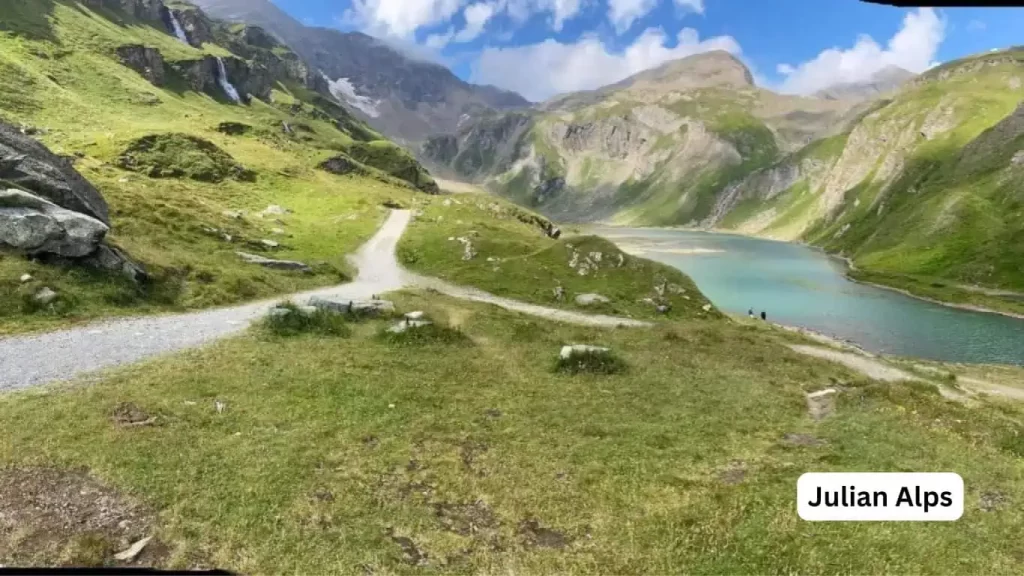
The Julian Alps are home to some of the most stunning mountain ranges in Europe, rivaling the iconic Swiss Alps in their grandeur and natural splendor.
One of the best things about backpacking through the Julian Alps is the opportunity to immerse yourself in the rich cultural heritage of Slovenia. These ancient mountains have been home to generations of mountain dwellers, each leaving their mark on the region’s architecture, cuisine, and traditions. Along your journey, you’ll have the chance to savor authentic Slovenian delicacies like ajdovi žganci (buckwheat spoonbread and GF!), jota (a hearty soup with beans, potatoes, and sauerkraut), and locally produced wines and cheeses.
Whether you choose to tackle the challenging peaks or opt for more leisurely village-to-village hikes, the Julian Alps offer a unique and unforgettable experience. You can stay in rustic mountain huts, charming family-run guesthouses, or even camp under the stars, allowing you to truly disconnect from the hustle and bustle of city life and reconnect with nature.
For those seeking an adventure off the beaten path, the Julian Alps are a perfect destination. With their stunning landscapes, rich cultural heritage, and diverse hiking opportunities, these mountains promise an experience that will leave you in awe and yearning for more. So, pack your best backpack, lace up your hiking boots, and get ready to embark on a journey through one of Europe’s best-kept secrets – the Julian Alps of Slovenia.
For the Gluten Free traveler:
Restaurant Oštarija offer a big variety of Fish, grilled meat, vegetarian dishes and salads.
5. Backpacking from Prague to Budapest (Czech Republic, Austria, Hungary)
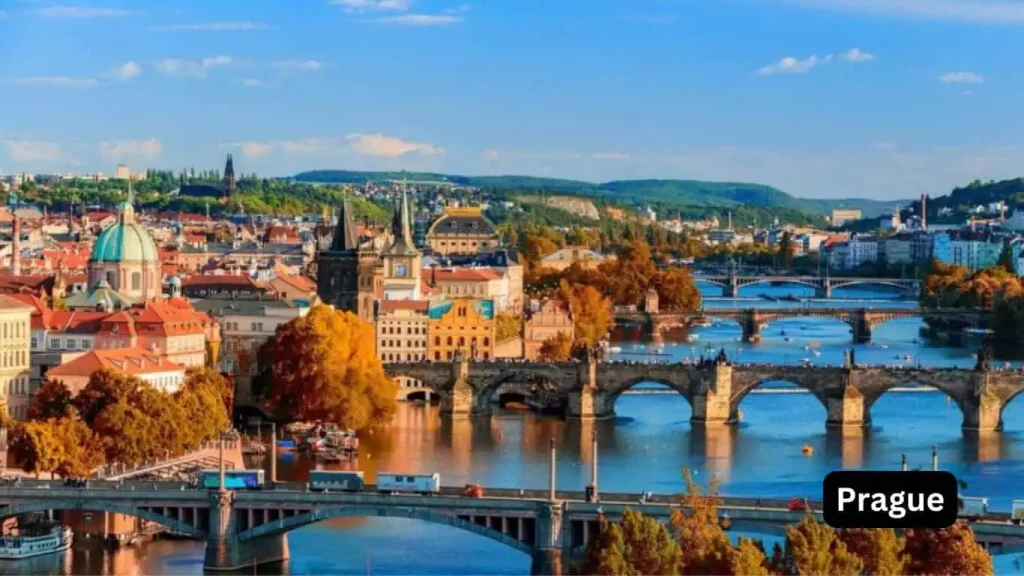
Embarking on a backpacking journey from Prague to Budapest is undoubtedly one of the best ways to experience the rich cultural tapestry of Central Europe. This legendary route, spanning three captivating European countries – the Czech Republic, Austria, and Hungary – offers an incredible opportunity to immerse yourself in diverse architectural marvels, vibrant city life, and delectable culinary delights.
For first-time backpackers or those on a budget trip, this route presents an excellent option. With affordable accommodation, cheap flights, and the convenience of train travel, exploring these iconic European cities becomes an accessible and cost-effective adventure. One of the top tips for making the most of this journey is to invest in a Eurail pass, allowing you to hop on and off trains with ease, maximizing your travel time and flexibility.
The journey begins in the enchanting city of Prague, where you’ll be greeted by the old town’s medieval charm and architectural wonders, such as the iconic Prague Castle and the stunning Charles Bridge. After soaking in the city’s rich history, your next stop could be Vienna, a cultural jewel renowned for its imperial palaces, world-class museums, and delicious Austrian cuisine.
From Vienna, the route leads you to Budapest, a city that seamlessly blends the old and new. Here, you can explore the majestic Buda Castle, soak in the thermal baths, and indulge in the flavorful Hungarian delicacies like goulash. One of the best parts of this leg of the journey is the opportunity to witness the stunning Danube River, which flows through the heart of the city, providing a perfect backdrop for your adventures.
Along this European backpacking route, you’ll have the chance to immerse yourself in the unique cultures, languages, and traditions of each country. From trying your hand at the local languages to mingling with young people in lively hostels or engaging in work exchange programs, the possibilities for authentic cultural experiences are endless.
Whether you’re a solo traveler or embarking on this journey with friends, this route offers something for everyone. History buffs can delve into the rich history of the region’s past, foodies can savor the diverse culinary offerings, and outdoor enthusiasts can explore the surrounding natural landscapes through day trips or village-to-village hikes.
So, pack your best backpack, grab your travel essentials, and get ready to embark on an unforgettable journey through some of Europe’s most captivating cities and cultural hubs. From the medieval charm of Prague to the imperial grandeur of Vienna and the vibrant energy of Budapest, this route promises to be an adventure that will leave you with cherished memories and a deeper appreciation for the diverse cultures that make Europe a truly unique and fascinating destination.
For the Gluten Free traveler:
Prague GF restaurants
See a lot of GF restaurants in Prague.
Vienna GF restaurants
Gasthaus Zum Wohl, Restaurant Führich, Secret Garden Café Restaurant
Budapest GF restaurants
Kata Pest (dedicated GF), Confectionery NOGLU, Tibidabo Gluténmentes Pékség
6. Backpacking the Swiss Alps (Switzerland)
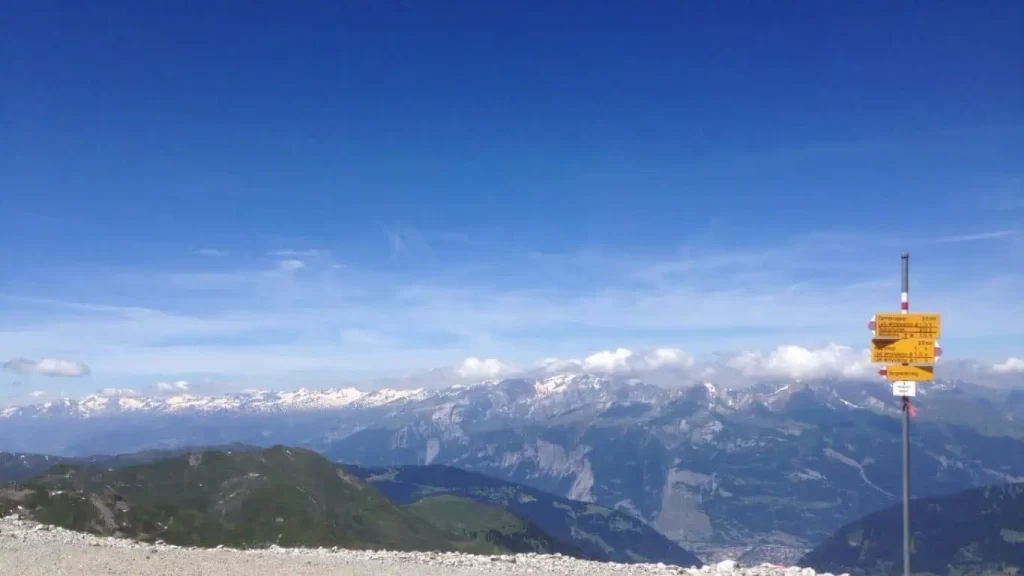
Switzerland is a hiker’s paradise, with jaw-dropping mountain peaks, sparkling blue lakes, and trails for every level. I hiked the Five Lakes Walk near Zermatt, and the views of the Matterhorn reflected in the water- pure magic.
But let’s be real—Switzerland isn’t just breathtaking—it’s budget-breaking! Whether it’s accommodations, food, or even a bottle of water, everything costs more here. But here’s a trick: stock up at local grocery stores. One of my favorite lunches was a simple picnic of Swiss cheese, gluten-free crackers, and dark chocolate, eaten while sitting by a crystal-clear alpine lake. Bonus: most towns have free public water fountains, so I refilled my bottle and kept hydrated without spending a cent.
Consider staying in mountain huts (alpine huts or ‘Berghütten’) for a more affordable yet authentic experience. Many huts serve gluten-free options like soups or cheese platters upon request.
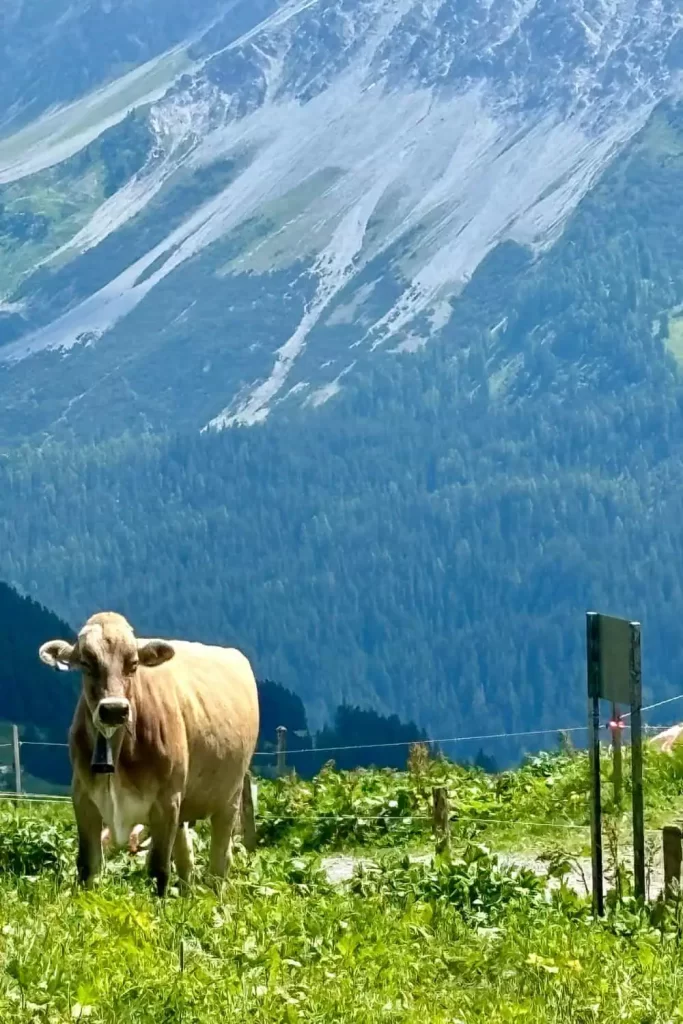
For the Gluten Free traveler:
- Zurich: The Butcher, Miss Miu, Rice Up
- Arosa
7. Backpacking the West Highland Way, Scotland
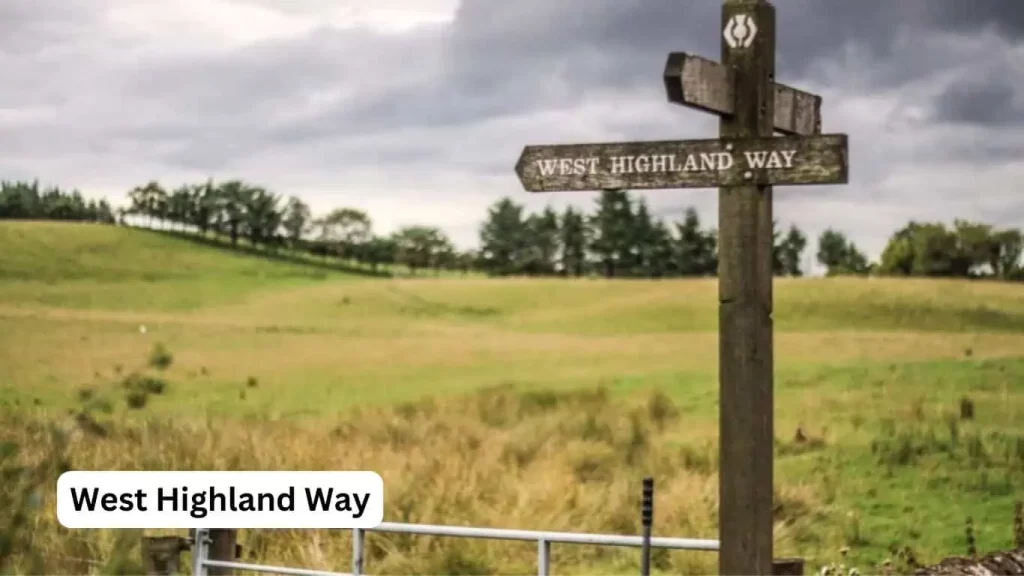
The West Highland Way is a great place for first-time and experienced backpackers alike to immerse themselves in the rugged beauty of Northern Europe’s Scottish Highlands. This iconic long-distance hike offers a variety of different trails, ranging from challenging mountain passes to leisurely village-to-village hikes, catering to diverse preferences and skill levels.
One of the best things about this route is the opportunity to witness the stunning landscapes that inspired countless works of literature and art. From the first day on the trail, you’ll be greeted with breathtaking vistas of rolling hills, serene lochs, and towering peaks, making it a photographer’s paradise.
While the West Highland Way can be tackled in its entirety over several travel days, it’s also a great option for those with a shorter amount of time. Many backpackers choose to explore specific sections of the trail, hopping on and off at various train stations or small villages along the way.
The best time to embark on this adventure is during the summer months when the weather is mild and the days are long, allowing you to make the most of your time on the trail. However, the shoulder seasons of spring and fall can also offer a unique and less crowded experience, with fewer tourists and more affordable accommodation options.
One of the most important things to consider when planning your West Highland Way backpacking trip is packing the right backpacks and gear. Investing in quality hiking equipment and proper footwear can make all the difference in ensuring a comfortable and enjoyable journey.
For the Gluten Free traveler:
West Highland Gate Beefeater has a dedicated GF menu and offers grill, fish, burgers, and everything in between.
Red Onion also offers a dedicated GF menu and serves contemporary casual dining with a menu that offers something for everyone.
Clachan Inn a dedicated gluten-free menu awaits. It’s recommended to make reservations.
The Cameron Grill is the perfect place for the gluten free traveler. A beautiful setting and a delicious dedicated gluten free menu awaits.
The Real Food Cafe invites you to a full gluten free menu including GF fish and chips, eggrolls and much more.
8. Backpacking the Camino de Santiago, Spain
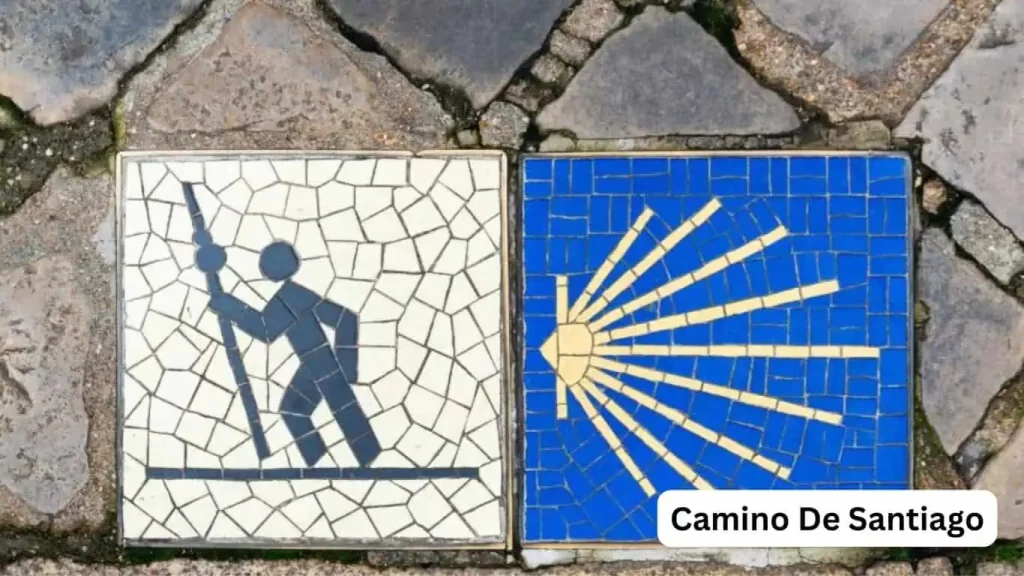
The Camino de Santiago, a network of pilgrim routes leading to the city of Santiago de Compostela in Northern Spain, is a specialty route that offers a unique blend of physical challenge, spiritual fulfillment, and cultural immersion.
For first-time backpackers or those seeking a truly transformative experience, the Camino de Santiago is a great place to embark on a journey of self-discovery. This ancient pilgrimage trail has been traversed for centuries by people from all walks of life, creating many different stories and experiences.
One of the most incredible aspects of the Camino is the people you meet along the way. I’ll never forget the day I crossed paths with Maria, a retired teacher from Portugal. She was walking the trail in honor of her late husband, who had always dreamed of completing the pilgrimage. Maria opened up about her journey—how each step brought her closer to healing and gave her time to reflect on their life together. That’s the magic of the Camino: it turns strangers into friends and moments into memories that stay with you long after the trail ends.
If you’re gluten-free, Spain has your back. The country is incredibly accommodating, and there are plenty of grocery stores along the Camino where you can stock up on essentials like gluten-free bread, snacks, yogurt, fresh produce, and more. These stops can be lifesavers, not just for fueling your journey but for keeping meals simple, safe, and satisfying. Combine those groceries with local specialties like grilled fish or tortilla española, and you’ll never feel like you’re missing out.
Timing your journey is also key. The summer months are the most popular, with longer days and plenty of opportunities to connect with other pilgrims. But if you prefer a quieter, more reflective experience, spring or fall offer cooler weather and fewer crowds—perfect for those seeking solitude.
Before setting out, make sure you’ve got the essentials: a good pair of walking shoes (trust me, your feet will thank you), a well-fitted backpack, and a lightweight rain jacket for those unpredictable Spanish showers. Planning ahead—whether it’s researching the best routes or securing travel insurance—helps you stay focused on what really matters: the journey itself.
The Camino de Santiago is so much more than a hike. It’s a chance to reconnect with yourself, forge lasting bonds with fellow travelers, and immerse yourself in the beauty, traditions, and stories of Northern Spain.
For the Gluten Free traveler:
With numerous routes on the Camino de Santiago, it’s challenging to list them all, but travelers can rest assured that Spain, known for its advanced gluten-free options, offers a variety of choices along the way.
Some smaller albergues (pilgrim hostels) may not cater to gluten-free diets, so always have backup snacks like gluten-free energy bars or rice cakes. Use apps like Find Me Gluten Free to locate restaurants along the way. If you need help planning the trip, here is a helpful link to a local organization that specializes in gluten-free Camino planning.
9. Backpacking in Kungsleden, Sweden
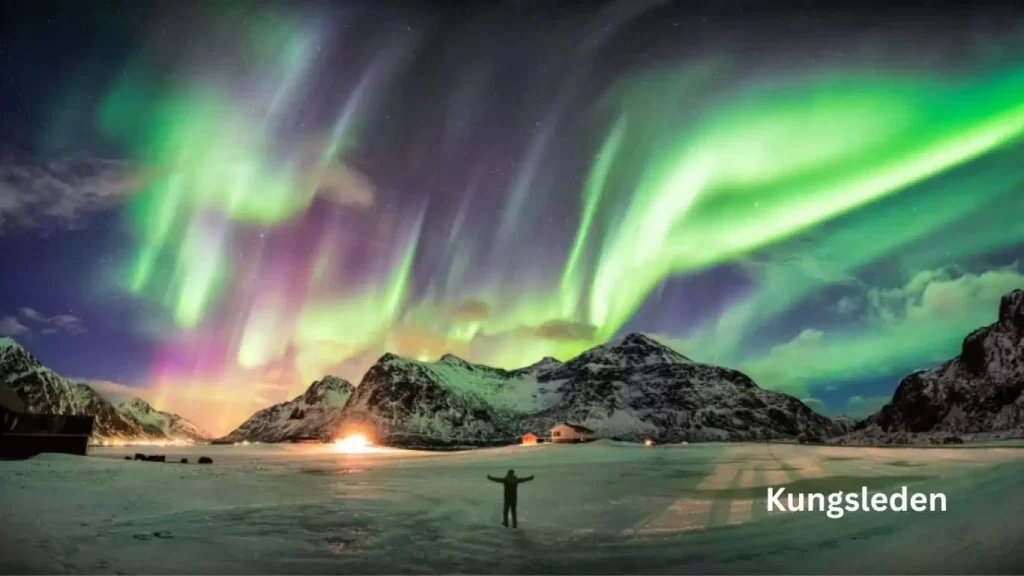
The Kungsleden, or the King’s Trail, is a true hidden gem in Northern Europe, offering an unforgettable backpacking experience through the stunning landscapes of Swedish Lapland. This long-distance hiking trail is a great place for adventure seekers and nature enthusiasts to immerse themselves in the pristine wilderness of the Swedish Arctic.
One of the best things about the Kungsleden is the opportunity to witness the natural phenomena of the midnight sun during the summer months and the mesmerizing northern lights during the winter. This unique experience alone makes the trail a top destination for backpackers seeking something truly extraordinary.
For first-time backpackers or those with a limited amount of time, the Kungsleden offers the option to tackle specific sections of the trail or embark on village-to-village hikes. This flexibility allows you to tailor your adventure to your preferences and travel times.
While the Kungsleden can be hiked year-round, the summer months are generally considered the best time for backpacking, as the weather is more favorable and the trail is more accessible and you have daylight for 24 hours. However, for those seeking a truly unique and challenging experience, the winter months can also be an option, with the added bonus of potentially witnessing the magical northern lights.
When planning your Kungsleden backpacking trip, it’s crucial to pack the right backpacks and gear, as well as invest in proper insulation and waterproof clothing to withstand the unpredictable weather conditions of the Swedish Arctic. Additionally, obtaining international travel insurance and consulting with a travel agent or tour operator can help ensure a smooth and well-planned adventure.
One of the most important things to consider when backpacking the Kungsleden is the language barrier, as English may not be widely spoken in some of the small villages along the trail. Learning a few basic Swedish phrases or investing in a phrasebook can go a long way in enhancing your overall experience and making it easier to navigate the region.
For gluten-free backpackers, packing lightweight staples like gluten-free pasta, dried fruits, and canned meats is essential. Local grocery stores in larger towns like Abisko stock some gluten-free items, but it’s best to bring a core supply with you.
For ALL travelers:
There are no catering options in many sections and therefore you need to bring your own food for most of the trail.
10. Backpacking the Rota Vicentina, Portugal
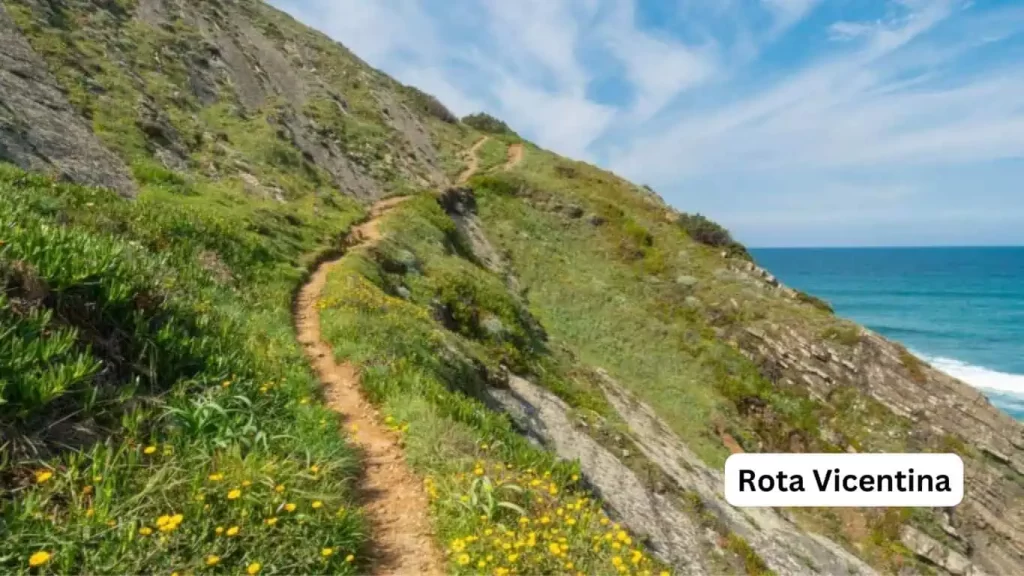
For first-time backpackers and seasoned adventurers alike, the Rota Vicentina in southern Portugal feels like a well-kept secret waiting to be uncovered. This network of hiking trails winds its way along the breathtaking Alentejo and Vicentina Coast, weaving together dramatic natural beauty, rich culture, and the authentic charm of Portugal’s coastal villages. It’s the kind of place that pulls you off the beaten path and into a world of hidden treasures.
One of the best things about the Rota Vicentina? Its flexibility. Whether you’ve got a week to spare for a full village-to-village trek or just a few days to explore, the trails can be tailored to fit your schedule. Short day trips? No problem. A multi-day hike with stops in tiny, welcoming towns? You’ve got it. And the best part: you set the pace, allowing you to soak in every moment of this stunning region.
For budget travelers, the Rota Vicentina is refreshingly accessible. Accommodation options range from charming small villages and affordable campsites to more upscale stays if you’re feeling indulgent. With a bit of planning, you can create an adventure that’s both affordable and unforgettable.
From the moment you step onto the trail, you’re surrounded by a visual feast: towering cliffs plunging into the Atlantic, secluded beaches waiting to be discovered, rolling hills dotted with grazing sheep, and traditional whitewashed villages that look like they’ve been pulled straight from a postcard. And if you’re a photography lover—or let’s be honest, a social media enthusiast—this trail offers no shortage of jaw-dropping backdrops to capture and share.
The Rota Vicentina isn’t just about the scenery, though—it’s also about the people and the culture. Along the way, you’ll meet warm, welcoming locals eager to share their stories and traditions. I’ll never forget stumbling upon a tiny café between São Luís and Odeceixe, where the owner, Benedita, waved me inside with a wide smile. The air smelled of garlic and fresh herbs, and she insisted I try her caldo verde soup. Made with kale and the creamiest potatoes, it was naturally gluten-free and downright soul-soothing. I lingered there for hours, sipping soup, chatting with Maria, and watching the sunlight dance through the café’s old wooden shutters. Moments like that remind me why I travel.
If you’re short on time, taking an overnight train to southern Portugal is a great way to maximize your adventure. It lets you skip the hassle of long daytime commutes and get straight to the good part: walking the trails, discovering hidden gems, and immersing yourself in this magical region.
For gluten-free travelers, the Rota Vicentina is a dream. Portugal is increasingly accommodating to gluten-free diets, and many restaurants along the route offer naturally gluten-free dishes like grilled fish, fresh salads, and hearty soups. Be sure to research your route and check out restaurant options in advance—there’s plenty of delicious, safe food to keep you fueled for the journey.
Whether you’re there for the coastal beauty, the cultural immersion, or the chance to slow down and reconnect with nature, the Rota Vicentina promises an unforgettable adventure that will stay with you long after the trail ends. And If you have time, take a detour to the Cabo Sardão lighthouse. Watching the Atlantic waves crash against the cliffs is an unforgettable moment—and a perfect picnic spot.
Remember, when backpacking through Europe, it’s always a good idea to carry gluten-free snacks, research local gluten-free options, and communicate your dietary needs to ensure a safe and enjoyable culinary experience. Happy trails!

